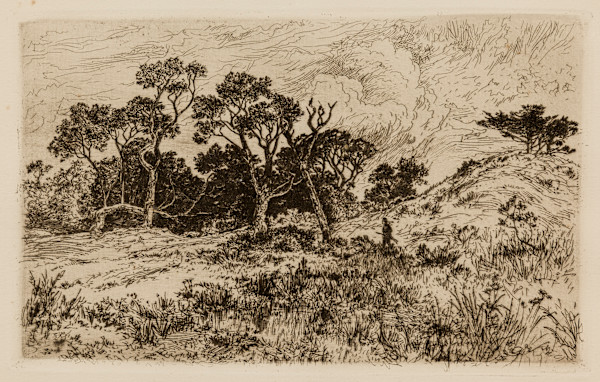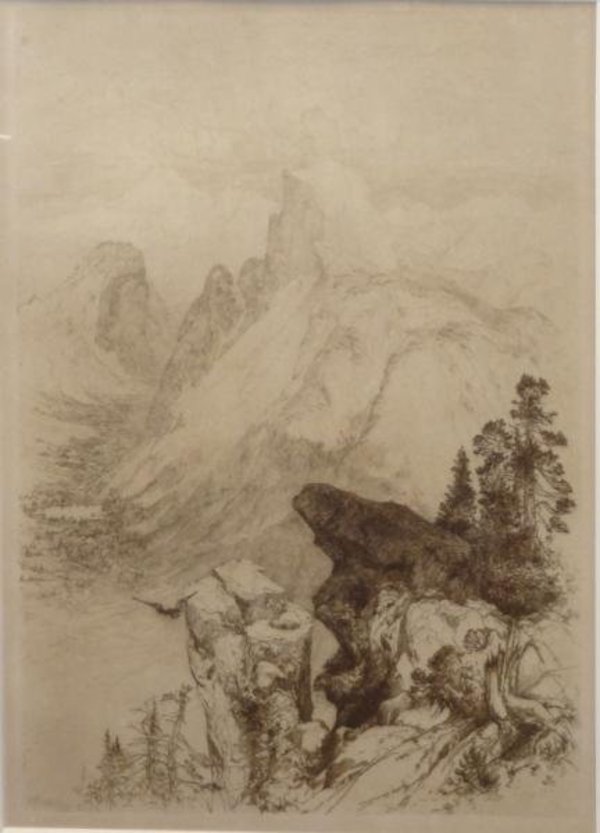-
Artist: Thomas Moran (American (born in England), 1837-1926)
“Thomas Moran was born in Bolton, Lancashire, England in 1837, one of a family of seven children. Bolton was a grimy textile center and his parents were both handloom weavers. He came to the United States when he was seven years old. Though he received no formal art training, he was an apprentice to a wood engraver in Philadelphia during his teens. From his experience, he learned the skillful manipulation of texture and value that became so evident in his work” (1).
“Moran spent his spare time painting and drawing, and in 1856 he began exhibiting his work at the Pennsylvania Academy of the Fine Arts. He also shared the first of several studios with his older brother, Edward (1829-1901), who became a noted marine painter. Their younger sibling, Peter (1841-1914), also pursued an artistic career, going on to make a name for himself as a painter and etcher” (1).
“Early in his career, Moran was hired as an illustrator at Scribner’s Monthly. By the mid-1850s he was drawing the firm’s illustrations for publication rather than carving them, and he began studying with local painter James Hamilton who introduced him to the work of British artist J.M.W. Turner. During the late 1860s, he was appointed the chief illustrator of the magazine. Moran traveled to England in 1862 to see Turner’s work, and he often acknowledged that artist’s influence on his use of color and choice of landscapes. During the 1870s and 1880s Moran’s designs for wood-engraved illustrations appeared in several important magazines” (2).
“In 1871 Moran accompanied the exploring expedition to the Yellowstone country and in 1873 went upon a similar expedition under Major John Wesley Powell, making sketches for his two great works, The Grand Canyon of the Yellowstone and The Chasm of the Colorado, which were purchased by Congress for ten thousand dollars each and are now both hanging in the Capitol in Washington” (1).
“Though renowned for his Western landscapes, Moran did not forsake the European scene. He visited Venice in 1886 and again in 1890. He produced several paintings of the city that were shown at the National Academy of Design in the following years. The Venice canal was a favorite subject of Moran's and a recurring theme in his painting” (1).
“Thomas Moran moved west permanently in his old age, settling in Santa Barbara, CA and traveling to Acoma and Laguna pueblos to paint the scenery and lifestyle of the native peoples. He died in 1926 of natural causes” (3).
Reference:
1.
Askart staff. Thomas Moran [internet]. [cited 2015 June 12]. Available from: http://www.askart.com/artist_bio/Thomas_Moran/1379/Thomas_Moran.aspx
2.
Havet, I. Thomas Moran [internet]. [cited 2015 June 12]. Available from: http://hrs-art.com/hudson-river-school-artists/thomas-moran/
3.
Thomas Moran Biography [internet]. 2002-2015 [cited 2015 June 12]. Available from: http://www.thomas-moran.org/biography.html

